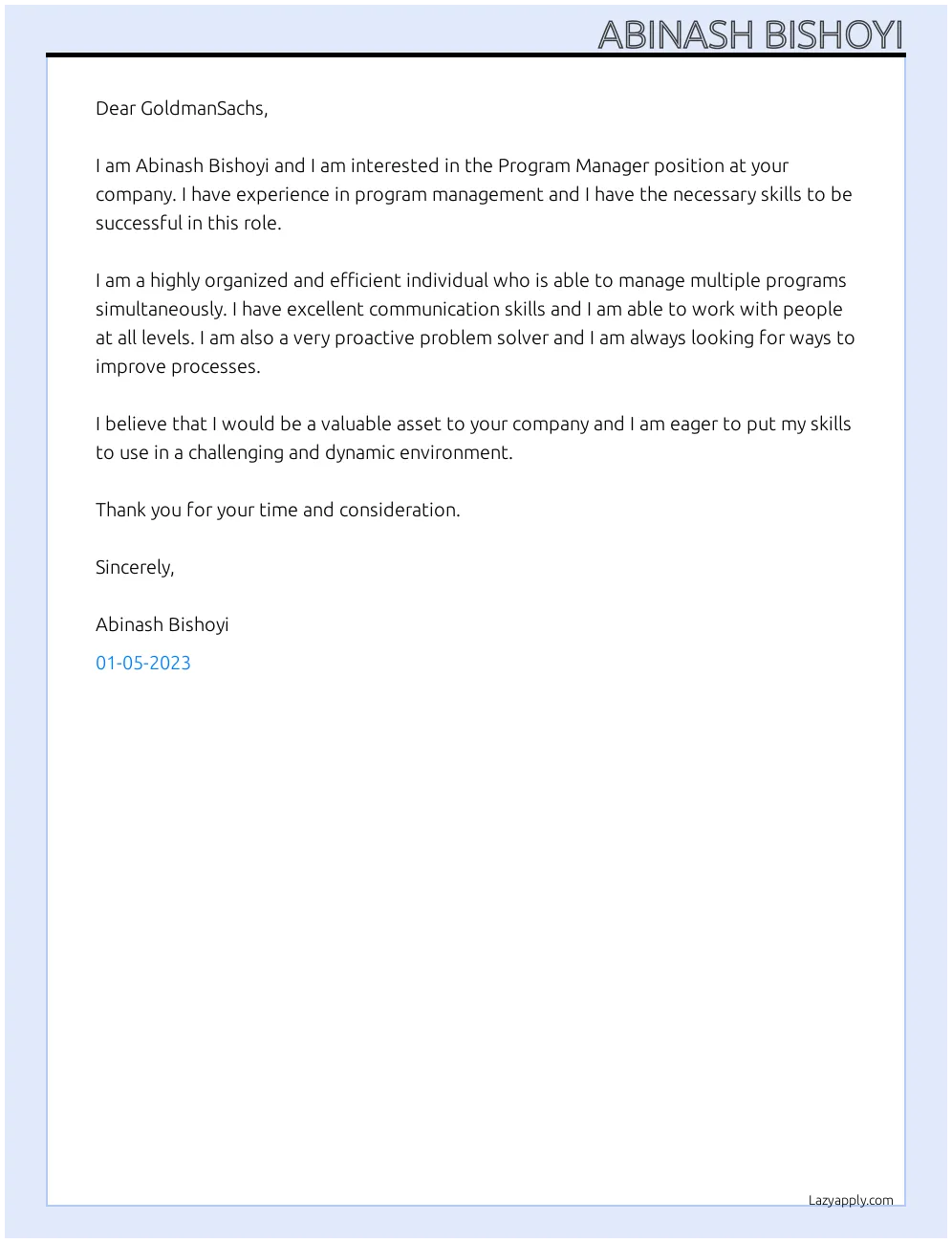What is a Program Management Cover Letter
A program management cover letter is a concise, professional document that introduces you to a potential employer and highlights your qualifications for a program management position. It’s your first opportunity to make a strong impression and persuade the hiring manager to review your resume. Unlike a resume, which provides a detailed history of your experience, the cover letter allows you to narrate your professional journey, explain your interest in the specific role and company, and demonstrate how your skills and experiences align with their needs. A well-crafted cover letter can significantly increase your chances of securing an interview.
Why a Program Management Cover Letter is Important
A program management cover letter serves several crucial purposes. First, it showcases your personality and communication skills, which are vital for a role that involves leading and coordinating teams. Secondly, it allows you to tailor your application to the specific job and company, demonstrating your genuine interest and understanding of their requirements. This personalization can set you apart from other candidates. Furthermore, the cover letter provides context to your resume, explaining how your past experiences translate into value for the prospective employer. It bridges any gaps and emphasizes the accomplishments that best fit the role’s needs. Ignoring this could be detrimental to your chances.
Key Elements of a Program Management Cover Letter
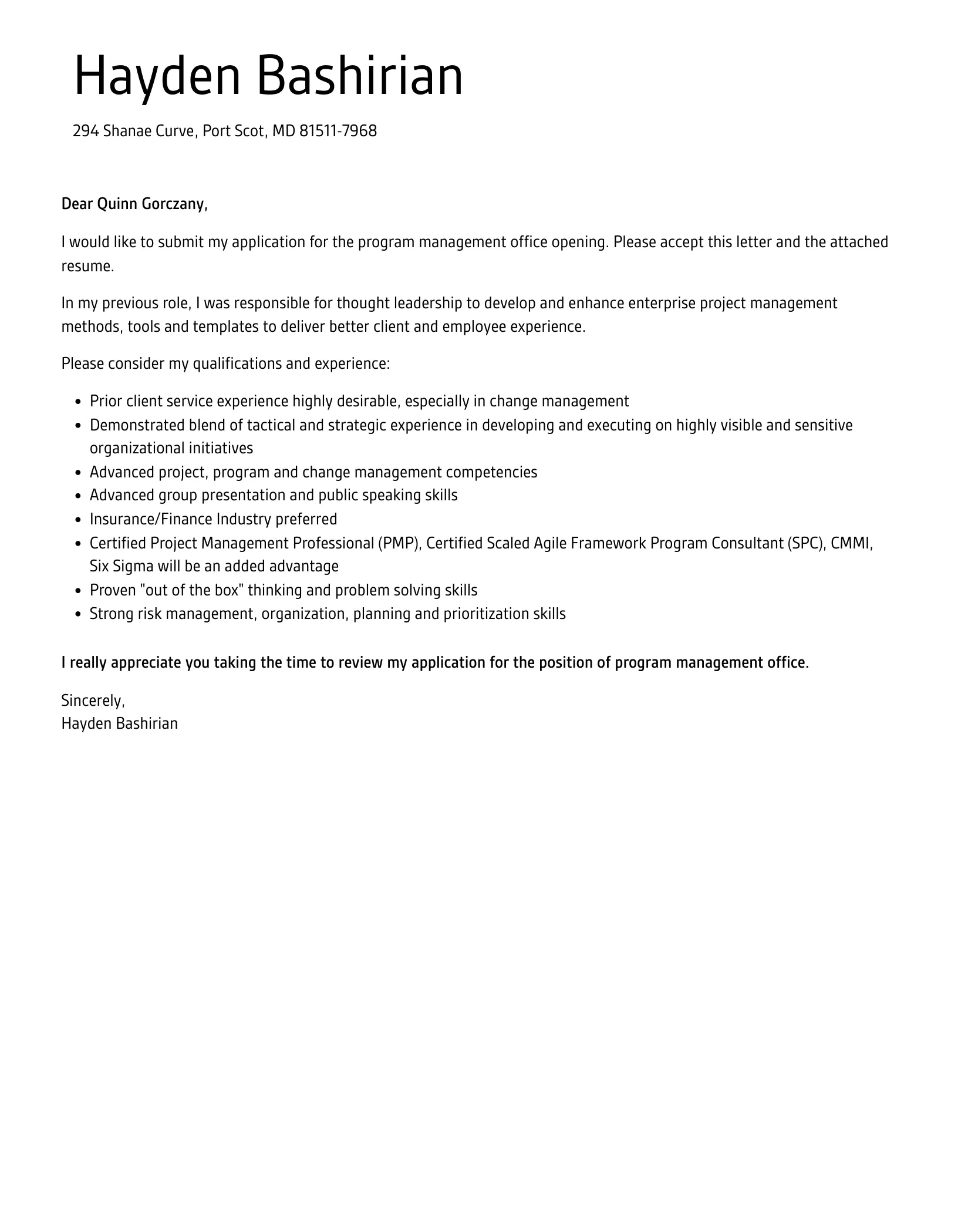
A compelling program management cover letter includes specific essential elements to make it effective. Each component contributes to the overall impact of your application. The structure is as important as the content. A well-organized letter guides the reader through your key selling points, making it easy for them to assess your fit for the position. Attention to detail is critical in a cover letter, reflecting the professionalism and organizational skills expected in a program manager. Your contact information is crucial, as is the date and recipient information.
Your Contact Information
Start with your contact information at the top of the letter. Include your full name, phone number, email address, and optionally, your LinkedIn profile URL. Ensure that your contact details are accurate and professional. This information should be easily accessible, making it convenient for the hiring manager to reach out to you. Double-check your email address for typos, and consider using a professional-sounding email address if your current one is not appropriate for job applications.
Date and Recipient Information
Below your contact information, include the date. Following the date, address the recipient. If you know the hiring manager’s name, use it; if not, use a professional greeting such as “Dear Hiring Manager” or “Dear [Company Name] Hiring Team”. Researching the hiring manager’s name shows initiative and attention to detail. If you cannot find the name, ensure you still address the letter to the appropriate department. Correct formatting shows that you can pay close attention to instructions.
Salutation
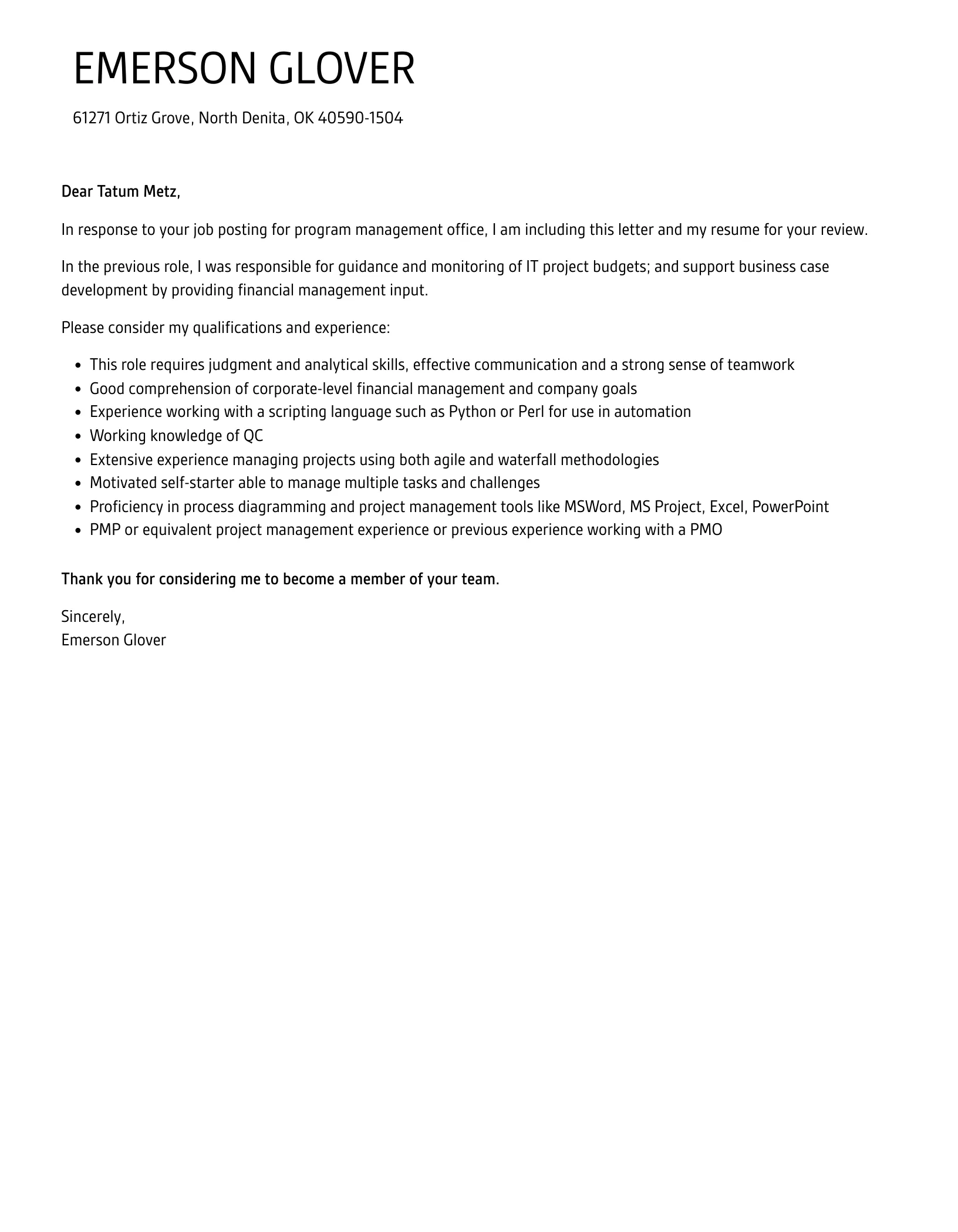
The salutation sets the tone for the rest of the letter. Use a formal and respectful greeting. “Dear Mr./Ms./Mx. [Last Name],” is ideal if you know the hiring manager’s name. If not, “Dear Hiring Manager” or “Dear [Department Name] Team” are acceptable alternatives. Avoid informal greetings like “Hi” or “Hello.” The salutation should be followed by a colon. Proper salutation ensures you create the right impression and demonstrate professionalism.
Body Paragraph 1 Highlight Your Value Proposition
The first body paragraph should immediately capture the reader’s attention. Briefly state the position you are applying for and why you are interested. Then, provide a concise value proposition—what you bring to the table. Mention your most relevant skills and experiences, highlighting what makes you stand out. Demonstrate that you’ve researched the company and that your goals align with theirs. The goal is to create curiosity and encourage them to read further.
Body Paragraph 2 Showcase Relevant Experience
In the second paragraph, delve deeper into your relevant experience. Focus on achievements and quantifiable results. Use the STAR method (Situation, Task, Action, Result) to describe your accomplishments in previous program management roles. Provide specific examples of projects you’ve led, challenges you’ve overcome, and the positive impact you’ve made. Highlight skills directly relevant to the job description, such as budget management, risk assessment, team leadership, or stakeholder communication. These paragraphs are the core of your case.
Body Paragraph 3 Address the Role and Company
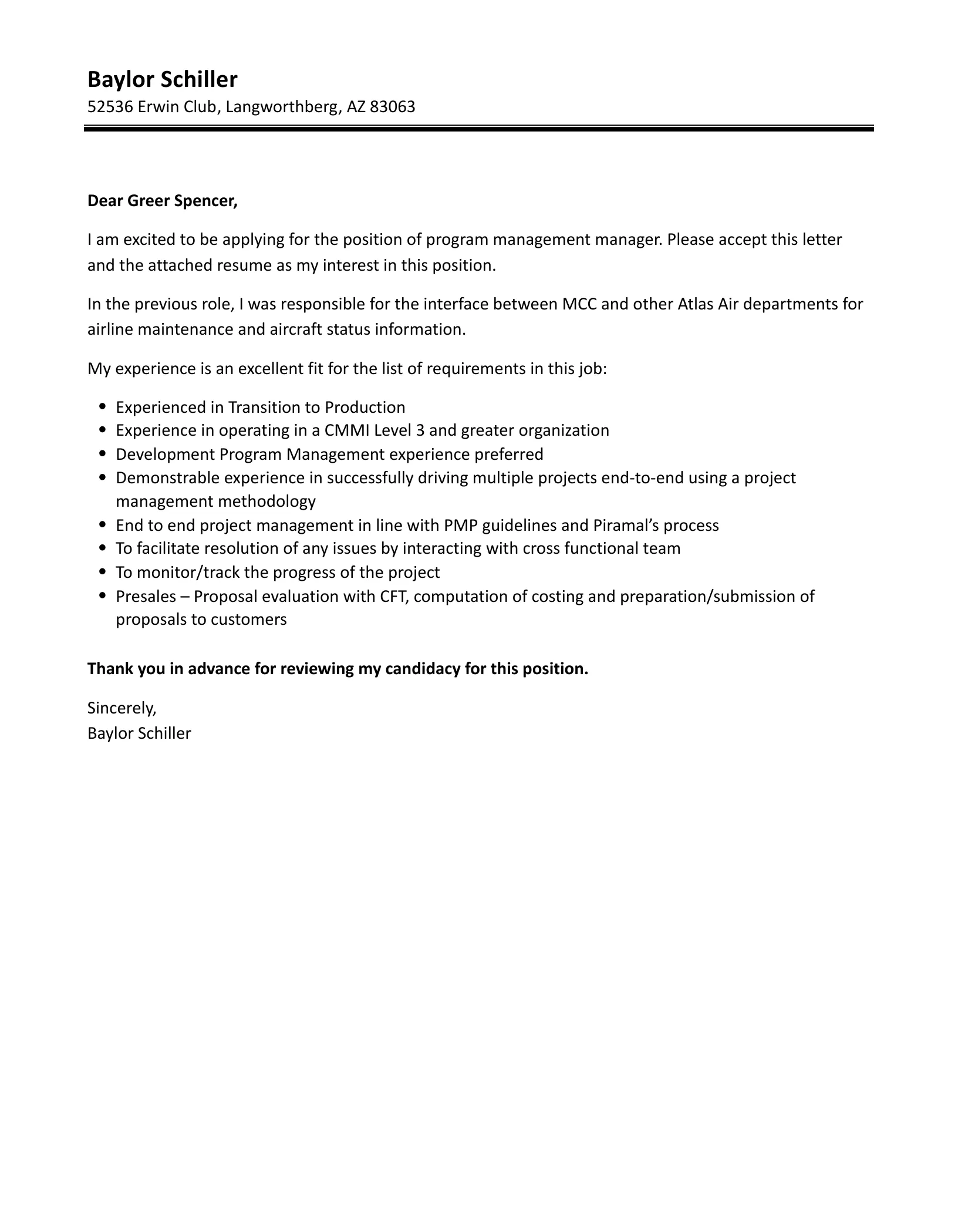
Demonstrate your interest in the specific role and the company in the third paragraph. Briefly explain why this particular opportunity aligns with your career goals. Discuss what appeals to you about the company’s mission, values, or culture. Show that you understand the company’s needs and how your skills can contribute to their success. Tailor this section to the specific job description. Reference the company’s work in a specific field that aligns with your values. Mention specific projects or initiatives that resonate with you to show you are attentive.
Body Paragraph 4 Mention Your Enthusiasm
Conclude your cover letter by expressing your enthusiasm for the opportunity and reiterating your interest in an interview. Thank the hiring manager for their time and consideration. Reiterate your confidence in your ability to contribute to their team and achieve the company’s goals. Clearly state your availability for an interview and provide your contact information again. This final paragraph leaves a lasting positive impression. Remember to also emphasize your availability for an interview.
Formatting Your Program Management Cover Letter
The appearance of your cover letter is just as important as its content. Proper formatting makes the letter easy to read and demonstrates your professionalism. Well-formatted documents are more likely to make a positive first impression and keep the hiring manager engaged. Poor formatting can create a negative impression. Pay close attention to font choices, spacing, and overall layout.
Font and Style Considerations
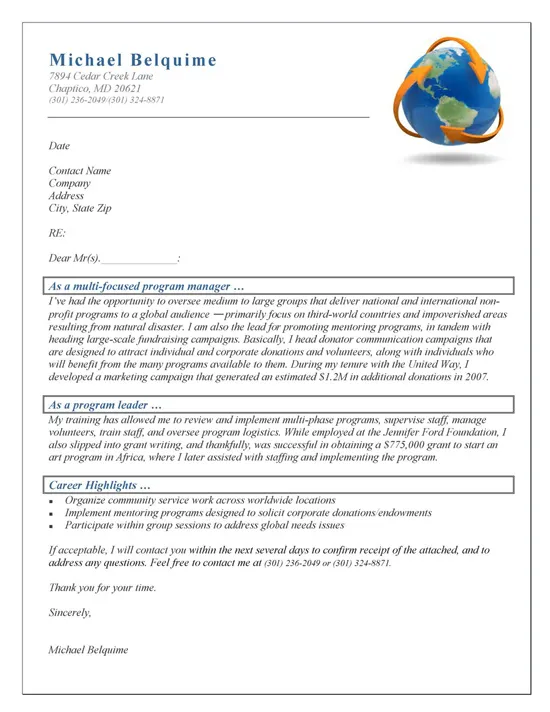
Choose a professional and easy-to-read font such as Times New Roman, Arial, Calibri, or Helvetica. Use a font size between 10 and 12 points. Ensure consistent formatting throughout the letter, including the font style and size. Use clear, concise language and avoid overly complex sentences. Use bullet points to highlight key accomplishments and skills. Keep the letter to one page. Maintain consistent margins and spacing to improve readability.
Proofreading Your Cover Letter
Proofreading is critical. Spelling and grammar errors can undermine your credibility. Always proofread your cover letter multiple times, and consider having someone else review it. Check for typos, grammatical errors, and punctuation mistakes. Ensure the tone is professional and appropriate for the role. Verify that all dates, names, and contact information are correct. Eliminate any unnecessary jargon or slang. Take your time, as one tiny mistake can cost you the opportunity.
Common Mistakes to Avoid
Several common mistakes can damage the effectiveness of your program management cover letter. Avoid these pitfalls to ensure your application stands out. Keep in mind that even minor errors can reflect poorly on your attention to detail and professionalism. Avoiding these common mistakes is an important part of crafting a successful cover letter.
Formatting
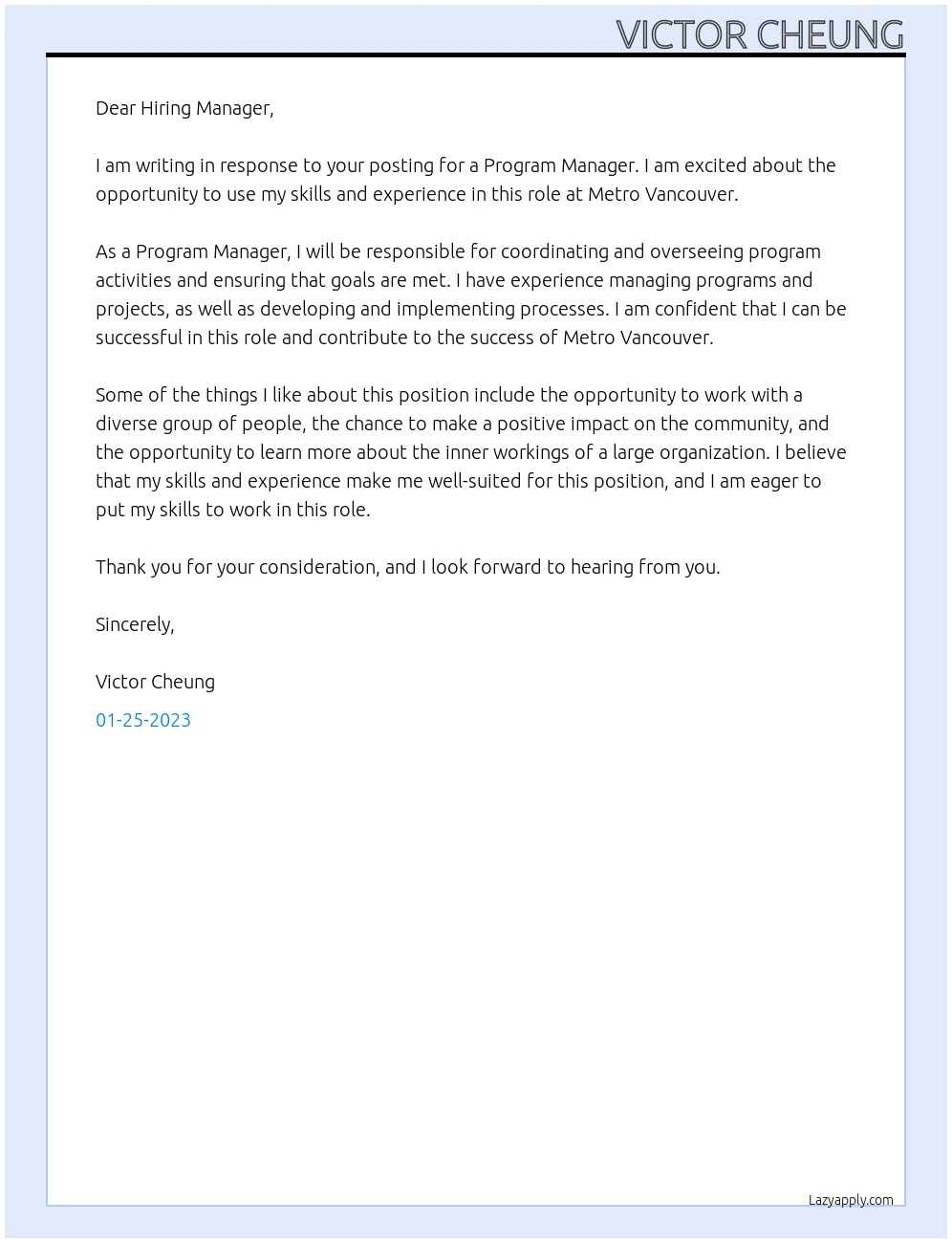
Avoid submitting a poorly formatted cover letter. Ensure consistent spacing, clear fonts, and a professional layout. Use appropriate margins and avoid excessive use of bolding or italics. Improper formatting makes the document appear unprofessional. Always ensure your document is easy to read at first glance. Ensure your document is easy to read and visually appealing.
Proofreading
Failing to proofread is a serious mistake. Always check for spelling and grammatical errors. Ask a friend to proofread it as well. Errors can lead to dismissal. Proofreading is essential to ensure that the document accurately and professionally represents your qualifications. Read your cover letter aloud. Proofread multiple times. Ensure there are no errors before sending.
Tailoring to Specific Programs
Do not send a generic cover letter. Always tailor your letter to the specific program and job description. Highlight the skills and experiences that match the requirements. Show that you understand the company’s needs. Demonstrating that you understand the role will showcase your interest. This makes you look serious about the position. Personalization demonstrates attention to detail.
Examples of Program Management Cover Letters
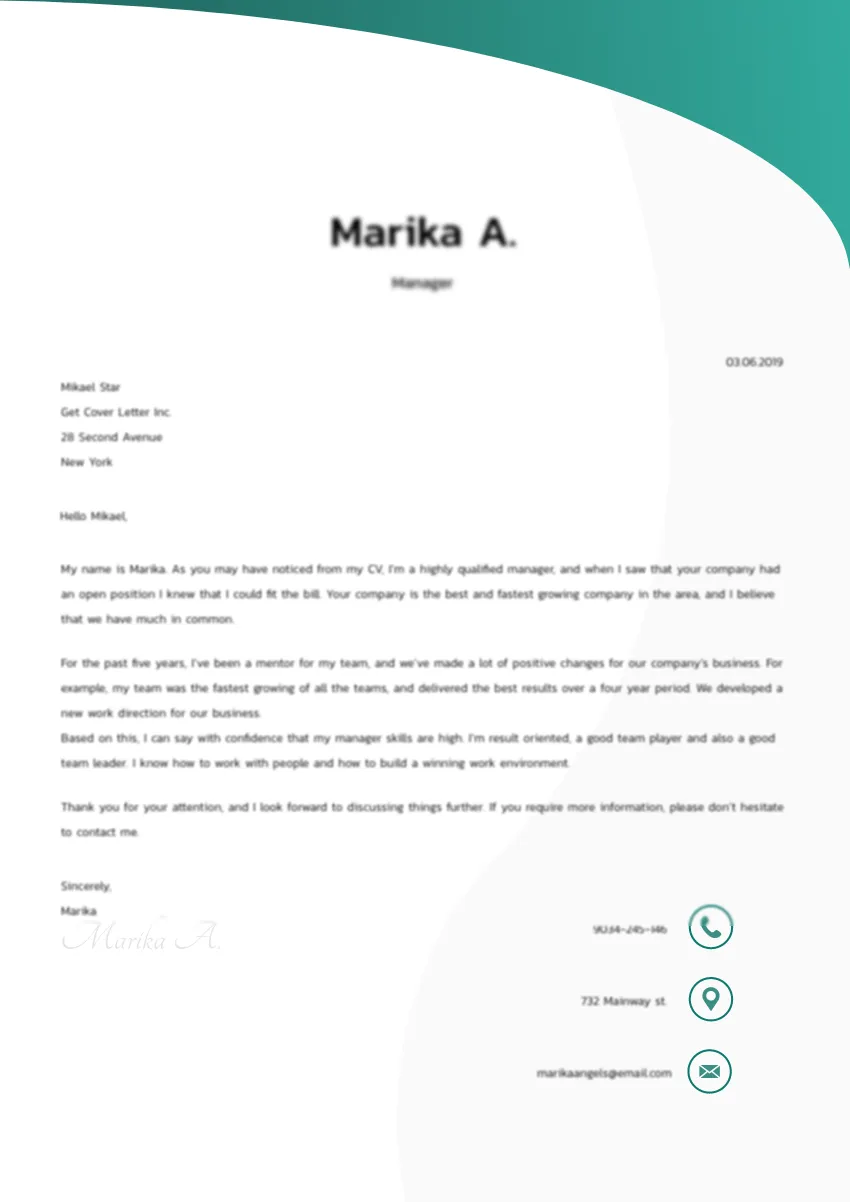
Reviewing examples can provide inspiration and guidance. Look for different formats. Customize the example letter to your specific circumstances. Tailoring the examples will make them more relevant to your unique career situation and will give you a better chance of being hired. Understand how others are applying for similar jobs. Study various examples to understand different approaches. Tailor the examples to your specific situation.
